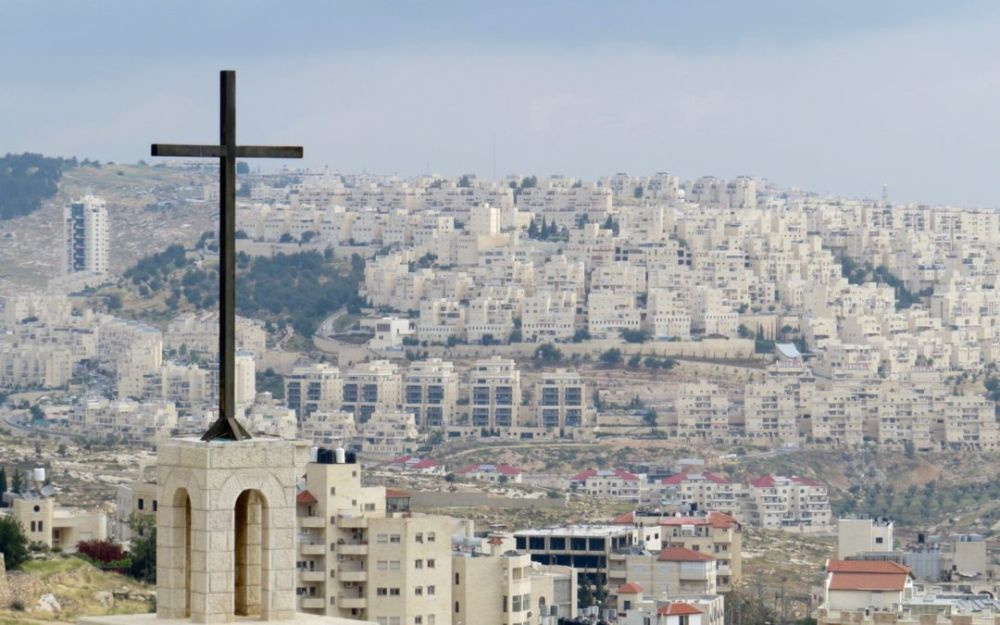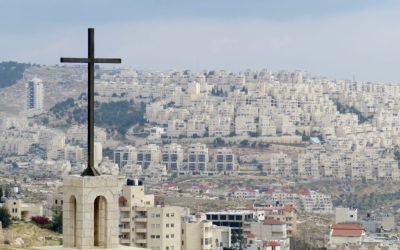

The Church of the Nativity is one of the oldest continuously operating churches in the world and is revered as the birthplace of Jesus Christ. A visit to this historical site is a must when in Bethlehem. The church is shared by various Christian denominations, including the Armenian Apostolic, Greek Orthodox, and Roman Catholic. Upon entering, you will be struck by the ancient ambiance, with flickering candlelight illuminating the ornate decorations. The grotto of the Nativity, located beneath the church, is where you can find the star marking the spot of Jesus’s birth. Visitors should prepare for the experience by dressing modestly and being aware of the religious significance of the site. Although the church is often crowded, the experience of visiting such a poignant religious landmark is profoundly moving for many.
The Milk Grotto, also known as Magharet Sitti Mariam or 'Grotto of Our Lady', is an intimate chapel located close to the Church of the Nativity. According to Christian tradition, the Holy Family took refuge here during the Massacre of the Innocents before their flight to Egypt. The name of the grotto comes from a legend stating that a drop of the Virgin Mary's milk fell to the ground, turning the cave's stones white. Pilgrims often visit this serene sanctuary to scrape off a bit of the white chalk and take it home as a blessing. The chapel is adorned with beautiful representations of the Holy Family and offers a tranquil atmosphere for reflection and prayer. The visit can be a short but profound experience that complements the historical journey through Bethlehem.
No visit to Bethlehem is complete without a stroll through the lively Old City Market. As you wander through the narrow cobblestone streets, you'll encounter a bustling atmosphere filled with the scents of Middle Eastern spices, the sounds of haggling vendors, and the sights of an array of handcrafted souvenirs. Here, you can purchase traditional Palestinian embroidery, olive wood carvings, ceramic ware, and a variety of local delicacies. The market is not only a place for trade but also a rich tapestry of Bethlehem's culture and daily life. Engaging with the friendly vendors and tasting local street food like falafel or knafeh can provide a delightful sensory experience and a deeper connection with the community of Bethlehem.
The Shepherd's Fields are a series of pastoral green spaces located in the village of Beit Sahour, a suburb of Bethlehem. According to Christian tradition, this is where angels first announced the birth of Christ to the shepherds. Visitors to the area can explore several sites, such as the Roman Catholic Shepherd's Field Chapel, a modern and visually stunning structure with brilliant murals and stained glass, and the Greek Orthodox Shepherd's Field, which features ancient ruins and a fifth-century cave-church. A visit to the Shepherd's Fields is an opportunity to reflect on the simplicity and wonder of the Nativity story while enjoying the quiet beauty of the Palestinian countryside. Walking paths guide visitors through the fields, providing scenic vistas and a peaceful setting for contemplation.
The Mount of Temptation rises dramatically from the Judaean Desert and is believed to be the site where Jesus was tempted by the devil during his 40-day fast. Today, the Mount is home to the Greek Orthodox Monastery of the Temptation, perched precariously on the cliff face. Adventurous visitors can take a thrilling cable car ride up to the monastery, which offers panoramic views of the desert and the city of Jericho below. Exploring the monastery reveals not only the rich history associated with the site but also rock-cut chapels and spectacular natural caves. Engaging with monks, enjoying the serene environment, and reflecting upon the biblical history here make this experience unique and rewarding. The journey up the mount may take some time, but the insights gained and the stunning views are well worth the effort.
Mar Saba Monastery, located in the Kidron Valley, is one of the world’s oldest inhabited monasteries. Founded by Saint Sabas of Cappadocia in 439 CE, this Greek Orthodox monastery is a true architectural feat, with structures carved into the rocky slopes of the valley. The sight of the golden-hued monastic complex against the stark desert backdrop is breathtaking. Visitors are allowed to explore certain areas of the monastery, including the impressive fortification walls, several chapels, and the main courtyard. The rich history of Mar Saba and its secluded, serene environment make it an evocative place for meditation. It is important for visitors to note that women are not permitted inside the main compound, but can view the stunning exterior from a nearby viewpoint.
For a truly immersive cultural experience, attending a Palestinian cooking class in Bethlehem is an absolute delight. This engaging activity offers the chance to learn traditional recipes from local chefs or home cooks, using fresh, locally-sourced ingredients. discover the secrets of making mouthwatering dishes such as maqluba, hummus, and tabbouleh. The hands-on class not only equips you with culinary skills but also provides insights into the Palestinian way of life and the significance of food in bringing people together. At the end of the class, you'll sit down with your fellow cooks to enjoy the fruits of your labor in a convivial dining experience that epitomizes Palestinian hospitality.
The Palestine Museum of Natural History, located within the Bethlehem University campus, aims to research and conserve the region's natural and cultural heritage. Founded by Dr. Mazin Qumsiyeh, a Palestinian biologist and activist, the museum provides an opportunity to learn about Palestine's biodiversity, environmental issues, and sustainability efforts. The museum hosts a variety of exhibits showcasing local flora and fauna, as well as a botanical garden where visitors can observe a range of plant species native to the area. Engaging in interactive displays and educated by knowledgeable guides, visitors leave with a deeper understanding of the natural world and the importance of preserving it for future generations.
The Solomon's Pools are three ancient reservoirs located in the forested area southwest of Bethlehem. These impressive stone pools, dating back to the Herodian period, were part of an ancient water supply system that provided water to Jerusalem and the Second Temple. Visitors to these serene and historically significant pools can enjoy a tranquil escape from the city and picnic amid the surrounding pine and olive trees. The pools, despite their name, have no direct connection to King Solomon but rather represent a remarkable feat of engineering for their time. Exploring the adjacent ruins and learning about the ingenious methods used to gather and transport water across the desert landscape can be a captivating experience for history and archaeology enthusiasts.
Bethlehem has become an unexpected canvas for the mysterious and world-renowned street artist Banksy. His politically charged works, which adorn various walls and buildings throughout the city, offer compelling commentary on the Israeli-Palestinian conflict. Walking tours allow visitors to discover the locations of Banksy’s pieces, such as the famous 'Girl Frisking Soldier' and 'Flower Thrower'. The experience is not just about viewing art; it’s about understanding the context in which it was created. On these tours, you will have the unique opportunity to delve into the complex political circumstances and hear personal stories from locals, which bring a deeper meaning to Banksy’s evocative artwork. This thought-provoking activity is more than an art discovery; it serves as a window into the region's ongoing struggles and the power of art to convey a potent message.
